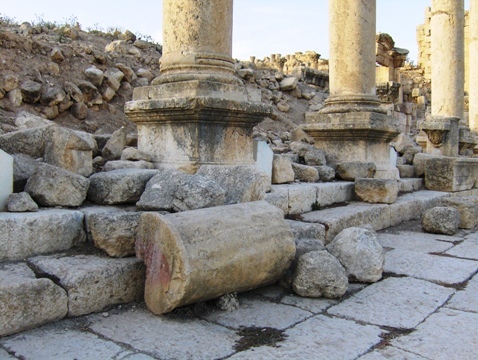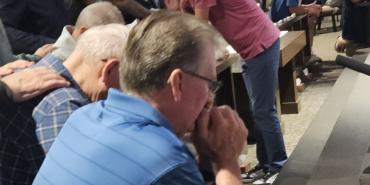Pillars of Faith

Walking amid the ruins of ancient Ephesus on a hot sunny day in Turkey, I reached down to run my hand over the fluted stone column that lay in the dust at my feet. As my fingers traced the curvature in the stone, I thought about the unknown worker who dressed the massive column in the ancient construction project. The workmanship was exacting.
Centuries of abrasion had done little to change the arc of each flute so painstakingly carved into the stone.The column, which undoubtedly once stood tall supporting an ancient structure, now lay broken in useless sections, attracting the attention of passersby only so briefly. Yet in its unyielding rigidity, it represented something far different from its present state. It once stood as a stately pillar of support, indispensable to the structural integrity of what may have been a library, temple, or center of commerce.
Perhaps someday in the distant future, archaeologists will sift through the remains of 21st century religious perspectives. They will search for clues that reveal ancient stories and look for evidence that explains the phenomenal shift of Christendom from the West to the East, from the North to the South. It is possible they may discover the artistic crafting of once dominating perspectives lying in the debris of cultural shifts.
What explanation will they attach to such phenomenon? Will they affix blame to weakening pillars that allowed strongholds to collapse in the dust of spiritual neglect and abandonment?
As the harbor of ancient Ephesus accumulated silt, rendering it impossible for ships of trade and commerce to enter, the city quietly, slowly died. In anticipation of future explorations by unborn generations, should not the Church begin to examine its own harbor?
Is the silt and sediment of doubt, legalism, revisionism, and idolatrous fascination with the transient even now seeping into the channels of the harbor?
If fresh currents from the River of God no longer reach our harbor, our mighty works will become lifeless ruins. They will silently bear witness to an unwanted tragedy, rather than an anticipated triumph.
David J. Felter, editor in chief
Holiness Today, 2007
Please note: This article was originally published in 2007. All facts, figures, and titles were accurate to the best of our knowledge at that time but may have since changed.




